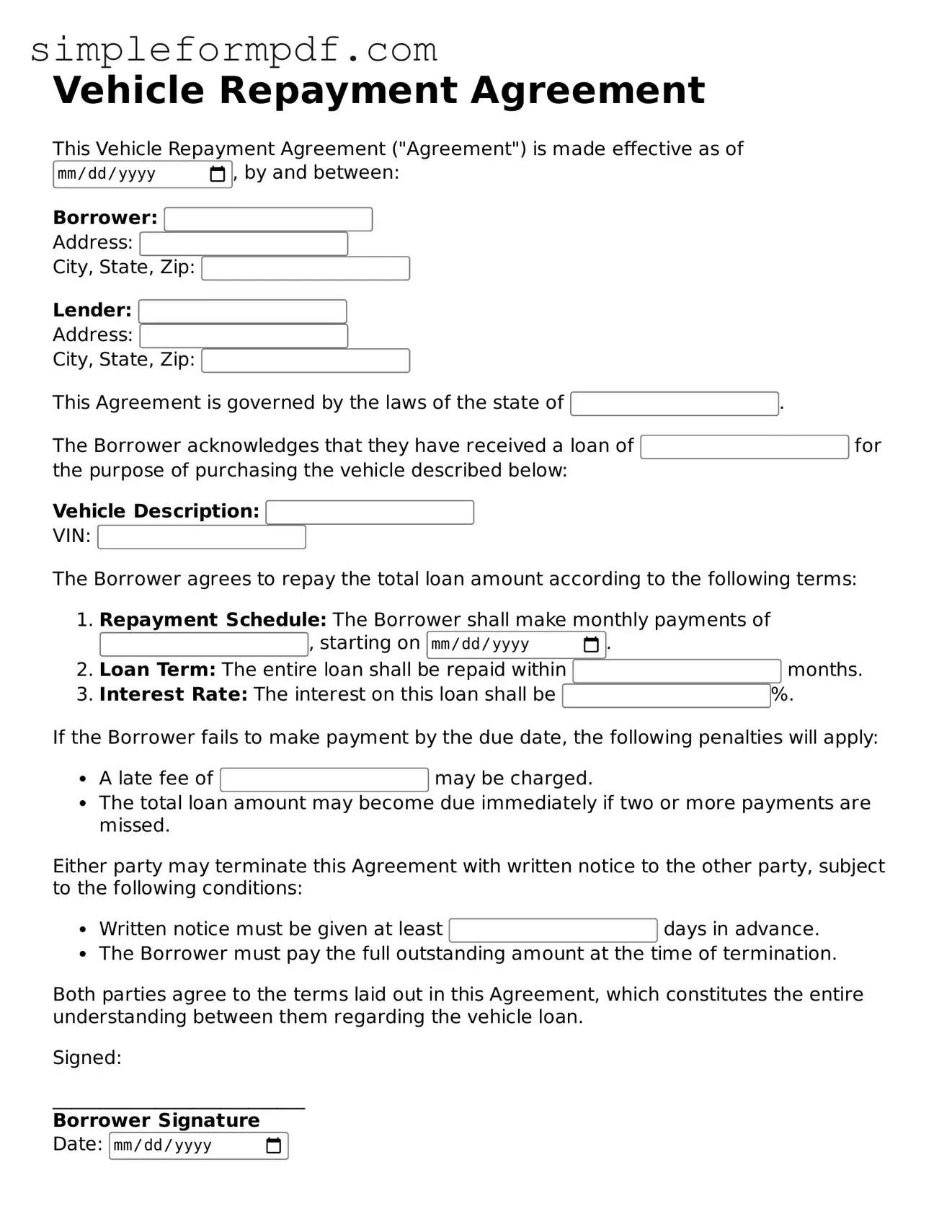Fillable Vehicle Repayment Agreement Template
The Vehicle Repayment Agreement form is a crucial document that outlines the terms under which a borrower agrees to repay a loan for a vehicle. This agreement typically includes details such as the loan amount, interest rate, and repayment schedule. Understanding this form is essential for anyone entering into a vehicle financing arrangement.
Ready to get started? Fill out the form by clicking the button below.
Launch Editor
